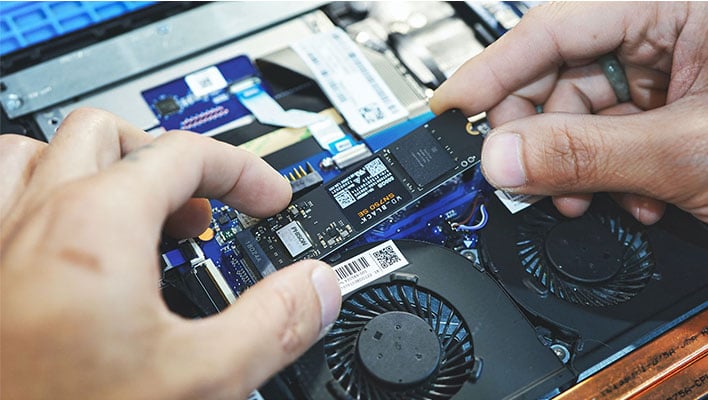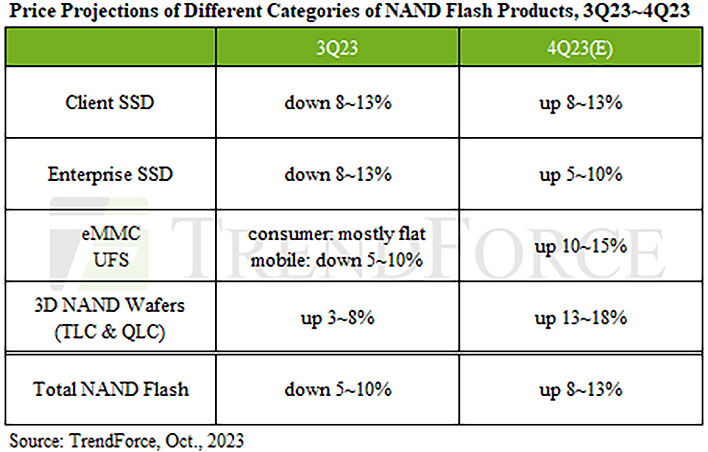SSD Prices On Track To Shoot Up More Than 10%, Should You Upgrade Your Storage Now?

Pricing on solid state drives (SSDs) has fallen so precipitously over the past couple of years that it's easy to forget how volatile the market can be. We're about to be reminded, according to TrendForce, which says client SSDs are on track to shoot up anywhere from 8-13% by the end of the year. The guidance comes amid an anticipated rise in PC DRAM pricing as well.
Such a jump in pricing would erase the 8-13% decline observed during the previous quarter. More concerning, it could be the beginning of a continued climb in storage prices as NAND flash memory makers scale back production. The good news for consumers, however, is that chip makers face "challenges in maintaining this upward price trajectory" into 2024.
In order for prices to continue going up, NAND flash memory suppliers will have to persistently reduce output. They also have to cross their fingers hope for a resurgence in demand for server SSDs, TrendForce says. Barring solid demand, the immediate surge in prices could quickly lose momentum.
In the more immediate future, though, don't be surprised to see SSDs trend a little higher than what you've become accustomed to when window shopping for storage.

"Reduced production of mainstream processes and fewer suppliers for high-end client SSDs have endowed suppliers with better bargaining power. Consequently, both high-end and low-end products are expected to increase concurrently," TrendForce states in its latest report.
TrendForce also recently noted that DDR5 prices are on track to rise 3-8%, and DDR4 by up to 4%. So between RAM and SSD storage, it could soon be a little more expensive to build or upgrade a PC. At least in theory, but perhaps not in practice. Why is that?
As pointed out with regards to DDR5 and DDR4 prices, this could all be offset in the short term by Black Friday and Cyber Monday sales. It's hard to know exactly what will be offered up for sale, but we can expect an emphasis on discounts starting in early November, as retailers have taken to extending Black Friday and Cyber Monday sales events into a season of discounts, which in recent years have run from early November through December and even into January.
Also worth noting is that even a 13% increase in SSD prices wouldn't necessarily amount to much, depending on the model. Let's look at where things currently stand for a few different drives...
- 1TB Samsung 970 Plus: $69.90
- 1TB Crucial P3 Plus: $44.99 (discounted $13)
- 1TB Samsung 980 Pro: $80.53
- 1TB WD_Black SN770: $64.99
Using those examples, a 13% increase would range from an additional $6 to $10. And only one of those models is on sale, which is to say there's no need to hit the panic button and start hording SSDs. We'll have a better idea where things stand once we're on the other side of the holiday shopping season.

